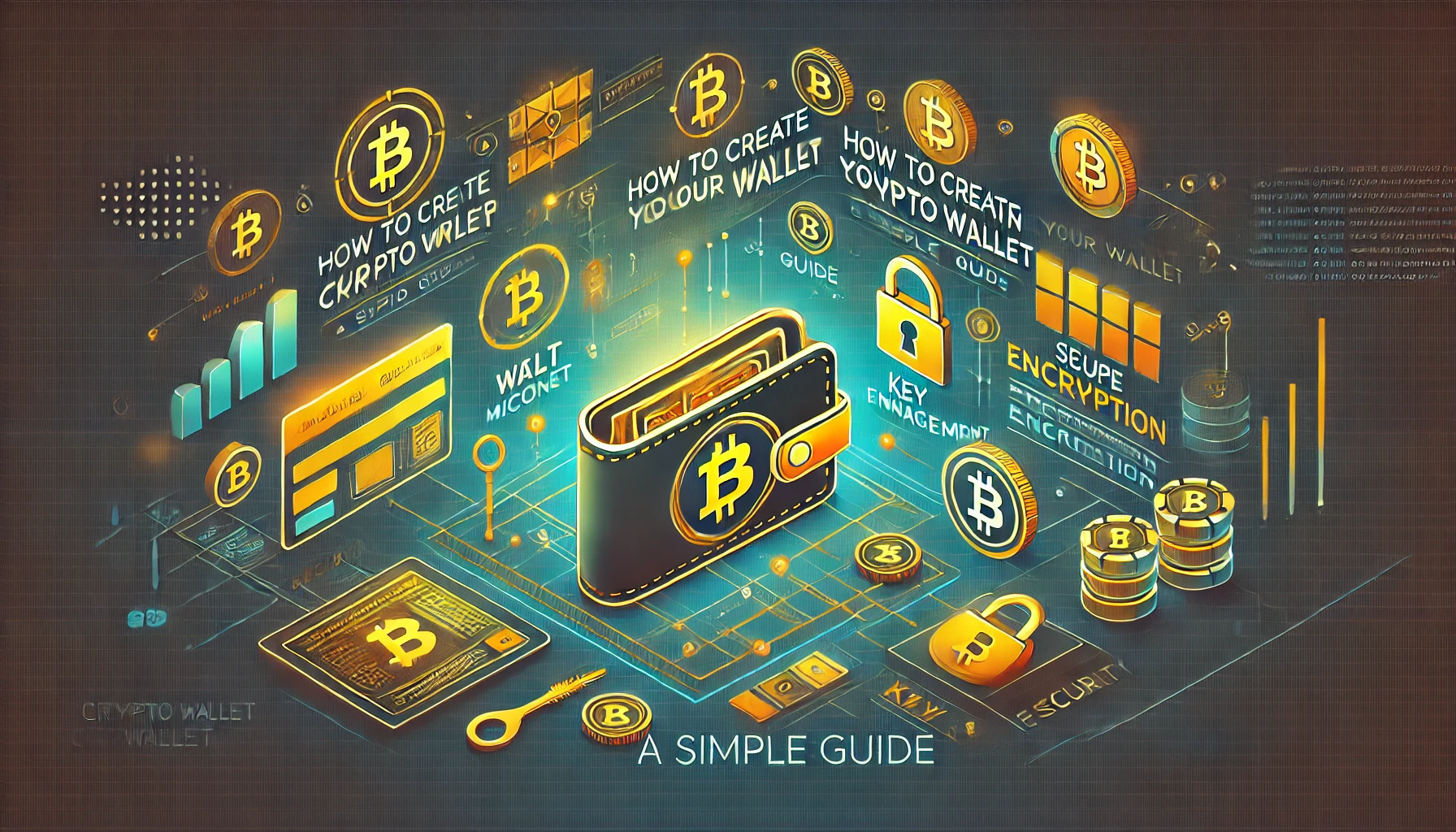In the fast-paced world of cryptocurrency, owning a crypto wallet is an essential step for anyone looking to participate in the decentralized economy. A crypto wallet serves as a digital vault where you can safely store, send, and receive your digital assets like Bitcoin, Ethereum, or other cryptocurrencies. Whether you are new to crypto or a seasoned trader, having a secure and reliable wallet is crucial to protect your funds and ensure smooth transactions. In this guide, we’ll walk you through the step-by-step process of setting up a crypto wallet, including choosing the best crypto wallet for your needs and navigating popular options like Metamask, Trust Wallet, and Exodus Wallet.

Needed in Creating your Crypto Wallet
Before diving into the setup process, it’s essential to ensure you have everything you need to create a crypto wallet. Here’s a quick list of the materials and tools required:
| Tools/Materials | Description |
|---|---|
| Computer/Smartphone | You’ll need a device to access and set up your crypto wallet, whether on desktop or mobile. |
| Internet Connection | A stable internet connection is essential for downloading wallet apps and initiating transactions. |
| Secure Password | Prepare a strong and unique password for your wallet to enhance security. |
| Two-Factor Authentication (Optional) | Adding two-factor authentication increases the security of your wallet, particularly when accessing it via web3 wallets like Metamask. |
Step-by-Step to Create your Crypto Wallet
Step 1: Choose the Right Crypto Wallet Type
The first step in creating a crypto wallet is deciding which type of wallet you need. There are several options available, including hardware, software, and web-based wallets. For beginners, software wallets like Exodus Wallet or Metamask are popular and user-friendly choices. These are known as web3 wallets and allow easy access to decentralized applications (DApps) and tokens. You can download these wallets from their respective websites or app stores.
For instance, to download Metamask, visit Metamask’s official site and follow their installation instructions for desktop or mobile.
Step 2: Download and Install Your Wallet

Once you’ve selected the wallet type, proceed to download it onto your device. In the case of Trust Wallet, you can visit the App Store or Google Play to install it on your smartphone. After the installation is complete, open the app and follow the setup instructions.
Step 3: Create a New Wallet Account
After installing your wallet, you will need to create a new wallet account. This involves choosing a secure password and setting up recovery options. With Exodus Wallet, the setup wizard will guide you through this process and provide you with a 12-word recovery phrase. This phrase is crucial—write it down and store it in a safe location. Never share this recovery phrase with anyone, as it can be used to gain access to your wallet.
Step 4: Backup Your Wallet
A secure backup is an essential step in protecting your crypto assets. Most wallets, including Trust Wallet and Exodus Wallet, will prompt you to write down your recovery phrase. Ensure you store this phrase offline, ideally in multiple locations, to avoid losing access to your wallet in case of technical issues or device theft.
Step 5: Secure Your Wallet with Two-Factor Authentication

To enhance the security of your crypto wallet, it is recommended to enable two-factor authentication (2FA). Some wallets, like Metamask, offer the option to integrate 2FA apps like Google Authenticator. This extra layer of security ensures that even if your password is compromised, a hacker would still need access to your phone to access your funds.
Step 6: Deposit Cryptocurrency into Your Wallet
Now that your wallet is set up and secured, it’s time to deposit some cryptocurrency. You can do this by either purchasing crypto through an exchange or receiving crypto from another wallet. Simply provide your wallet’s receiving address, which you can find under the “Receive” tab of your wallet app. Copy and share this address with the sender, ensuring they use the correct blockchain network (e.g., Ethereum for ETH deposits).
Step 7: Start Transacting and Managing Your Wallet
With your wallet funded, you’re ready to start managing your crypto. You can now send, receive, and store digital assets directly from your web3 wallet. If using Exodus Wallet, you can also swap cryptocurrencies directly within the app using its built-in exchange feature. Similarly, Trust Wallet provides access to decentralized exchanges (DEXs) and supports a wide range of tokens.
Tips and Warnings
When setting up a crypto wallet, security should be your top priority. Here are a few key tips and common mistakes to avoid:
| Tips | Warnings |
|---|---|
| Do: Always back up your recovery phrase and store it in multiple secure locations. This is the only way to recover your wallet if needed. | Don’t: Never share your recovery phrase with anyone, as it gives complete access to your wallet and all its assets. |
| Do: Use two-factor authentication (2FA) to add an extra layer of security to your crypto wallet. | Don’t: Avoid accessing your wallet on public or unsecured Wi-Fi networks, as they are prone to security risks like hacking or phishing. |
| Do: Regularly update your wallet software to ensure you have the latest security patches and features. | Don’t: Don’t keep large amounts of cryptocurrency in exchange-based wallets. Use a hardware wallet for better security. |
| Do: Research the best options that meet your needs, such as Exodus Wallet, Trust Wallet, or Metamask. | Don’t: Don’t skip the backup process or forget your recovery phrase. Once lost, your crypto assets will be unrecoverable. |
Conclusion
Setting up your own crypto wallet is a critical first step for anyone looking to engage in the cryptocurrency space. By following the steps outlined above, you can create a secure and reliable wallet that suits your needs, whether you opt for Exodus Wallet, Trust Wallet, or Metamask. Take the time to understand the setup process, secure your wallet properly, and start managing your crypto assets with confidence.
FAQ
What is the best crypto wallet for beginners?
For beginners, Exodus Wallet and Trust Wallet are excellent options. Both provide a user-friendly interface, strong security features, and support for a wide range of cryptocurrencies. These wallets also make it easy to backup and restore your funds using a recovery phrase.
Can I use a crypto wallet without an internet connection?
Most software wallets, including web3 wallets like Metamask, require an internet connection to send and receive cryptocurrency. However, hardware wallets such as Ledger or Trezor allow offline storage of your private keys, making them a more secure option for long-term holdings.
How do I recover my crypto wallet if I lose my device?
If you lose your device, you can recover your crypto wallet using the recovery phrase provided during the wallet setup. As long as you have securely stored this phrase, you can restore your wallet and access your funds on a new device.

